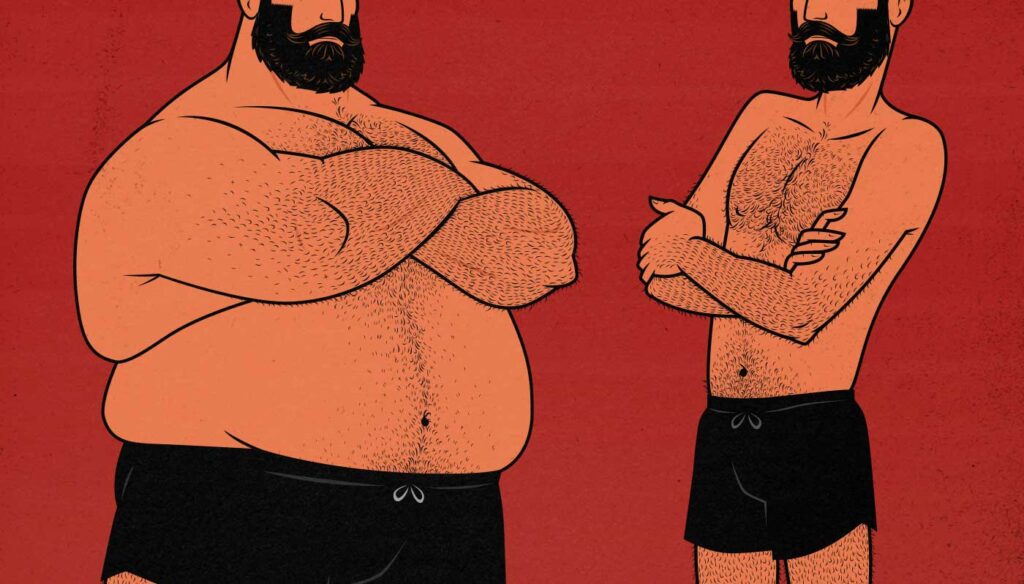
The P-Ratio: How Body-Fat Percentage Affects Muscle Growth & Fat Gain
There’s a common rule of thumb that we should get lean before we bulk, and then stop bulking once we reach around 20% body fat. The idea is that as we get leaner, our insulin sensitivity improves, allowing us to make leaner muscle gains. And then as we bulk up, our body fat percentage gradually rises, our insulin sensitivity falls, and we begin to gain proportionally more fat.
But new evidence calls this idea into question. Two researchers, Greg Nuckols, MA, and Eric Trexler, PhD, have been conducting hypertrophy research to see which body-fat percentages tend to yield the leanest muscle growth. I spoke with them, and they shared their early results and recommendations, which are already creating waves among the top experts.
So, does having a higher body fat percentage make it harder to build muscle leanly?
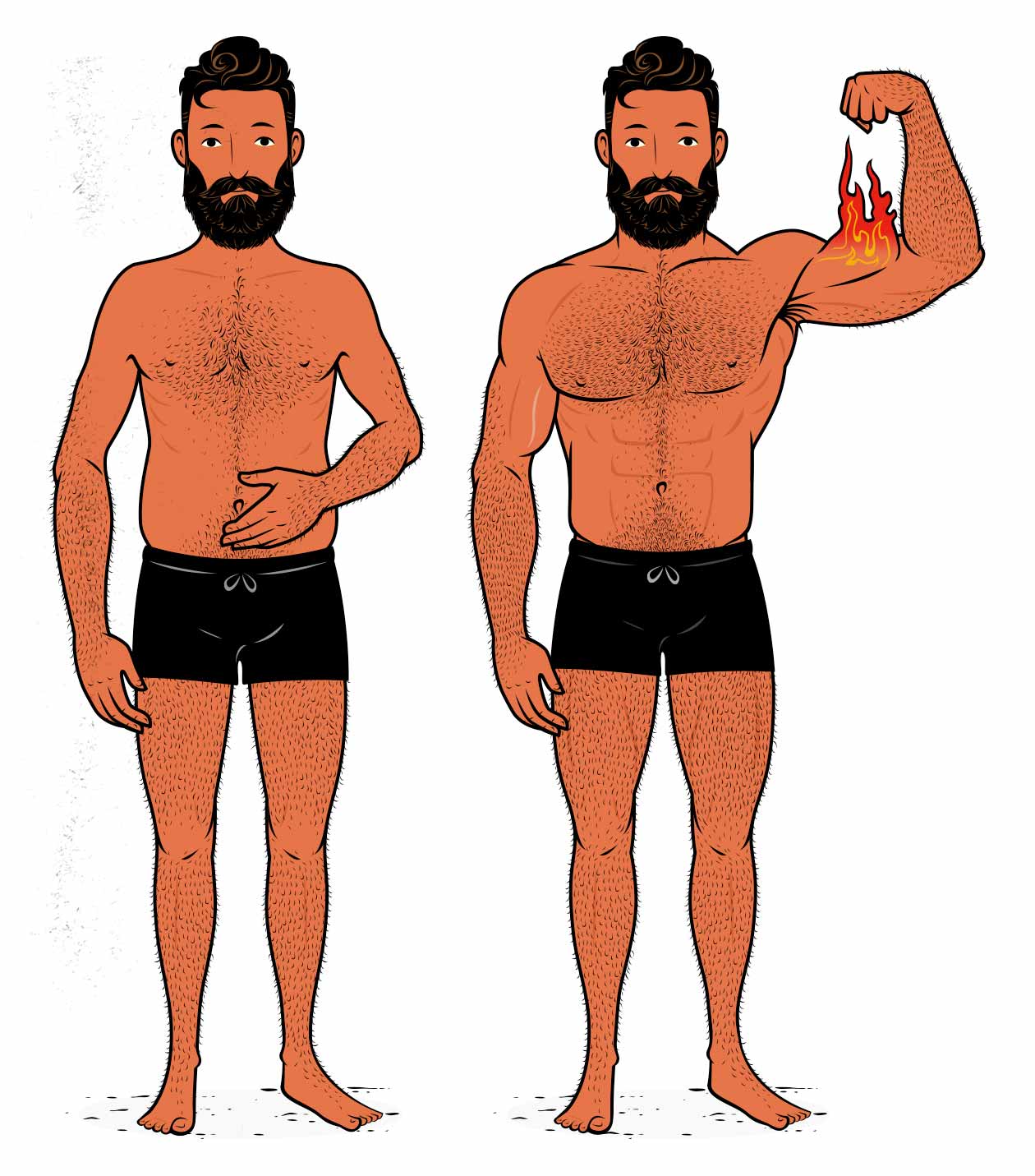
Introduction
Greg Nuckols and Eric Trexler are hypertrophy researchers who founded Monthly Applications in Strength Sport (MASS), along with Eric Helms, PhD, and Mike Zourdos, PhD. They specialize in reviewing muscle-building and strength research, and they’re known for conducting meta-analyses with the data in the studies they review.
For example, they took all of the research on isolation lifts, many of which lacked the statistical power to find any benefit. But when added together, the benefit not only became statistically significant but also quite large, showing around 50% more muscle growth by adding in isolation lifts.
For another example, they looked at the research on training to failure and found that although the results were mixed, if we sort the participants into beginner vs intermediate lifters, a clear pattern emerges. Beginners benefit from training to failure, intermediates don’t.
Now they’re looking into the idea that being at a lower body-fat percentage improves our insulin sensitivity, allowing us to build muscle more leanly. They’re still in the middle of going through the research, but so far, it seems that we’ve had it backwards.
What’s the Best Body-Fat Percentage for Bulking?
One of the benefits of being lean is that it improves insulin sensitivity. As our body fat percentage rises and we move outside that healthy range, our insulin sensitivity starts to decline, eventually leading to insulin resistance.
Most bodybuilders believe that if we let our body-fat percentage drift too high while bulking, our declining insulin sensitivity will make it harder to build muscle, causing more of the weight we gain to be stored as fat. That’s why we often hear the advice to stop bulking at 20% body fat and then cut back down to 10–15% before we start bulking again. The idea is that by keeping ourselves within that healthy range, we can make leaner gains.
The problem is, that doesn’t seem to be true. In fact, the opposite seems to be true.
Body Fat Doesn’t Impair Muscle Growth
The first part of this idea is that having a higher body fat percentage makes it harder to build muscle. If we look at sumo wrestlers, though, we see people with high body fat percentages who have the highest degrees of muscularity ever measured. We see a similar body composition among football linemen. Some of the top powerlifters also fit that mould.
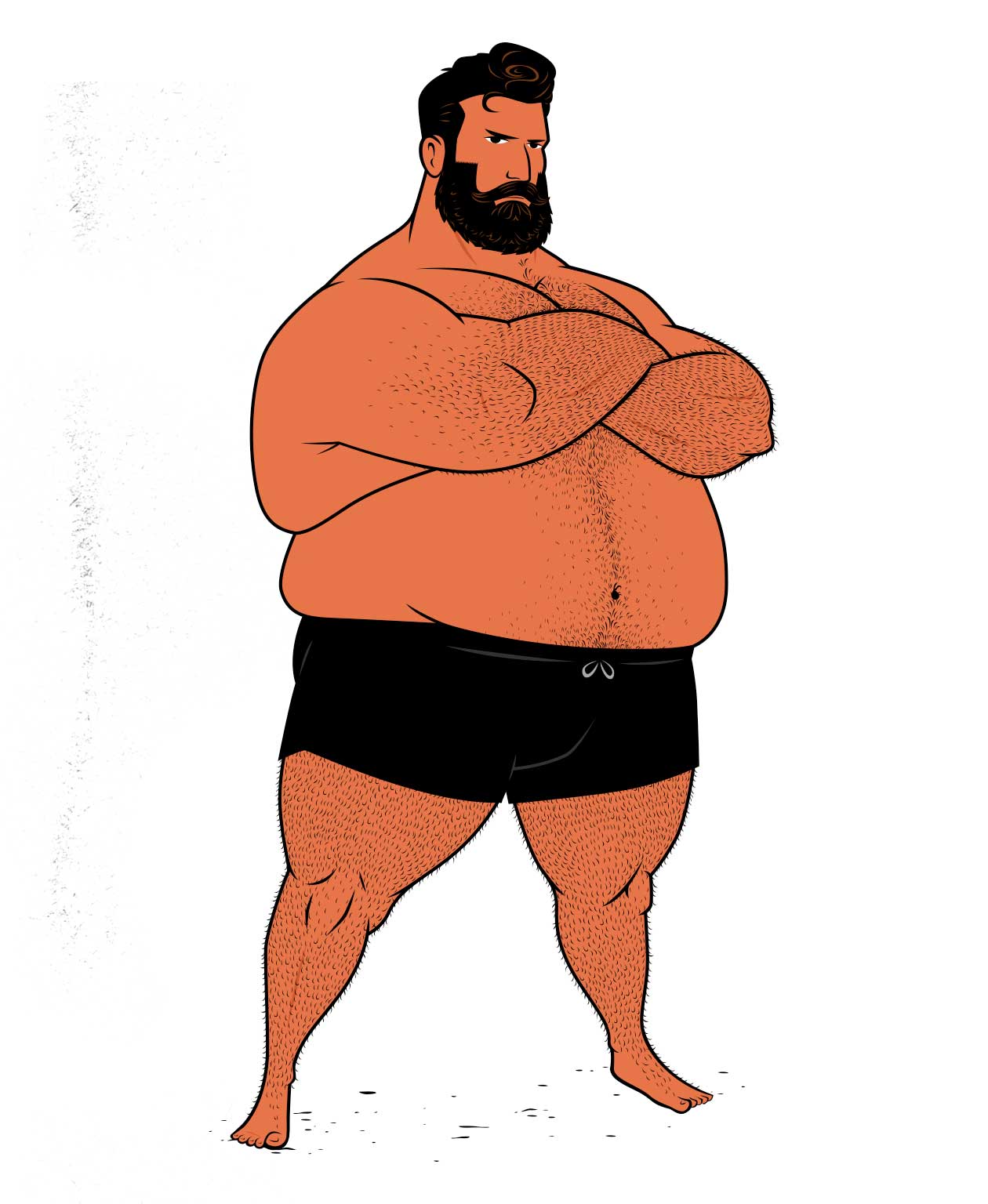
So it’s clear that having a high body fat percentage doesn’t prevent us from becoming muscular or strong. In fact, it seems that the opposite is true. Gaining a ton of weight makes it more likely that we’ll gain muscle and strength.
Cross-sectional data [indicates] that body fat’s impact on fat-free mass accretion is, if anything, more permissive than inhibitory.
Eric Trexler, PhD
However, that doesn’t tell us how our body fat percentage affects how lean our gains are. Perhaps bulking at 15% body fat allows us to gain 2 pounds of muscle for every pound of fat that we gain (67% lean mass), whereas bulking at 30% body fat would give us 1 pound of muscle for every 2 pounds of fat (33% lean mass).
More Body Fat Means Leaner Gains
It seems that the higher our body-fat percentage is, the leaner our muscle gains are while bulking. Here’s a graph from the upcoming research that Eric Trexler, PhD, and Greg Nuckols, MA, have been working on:
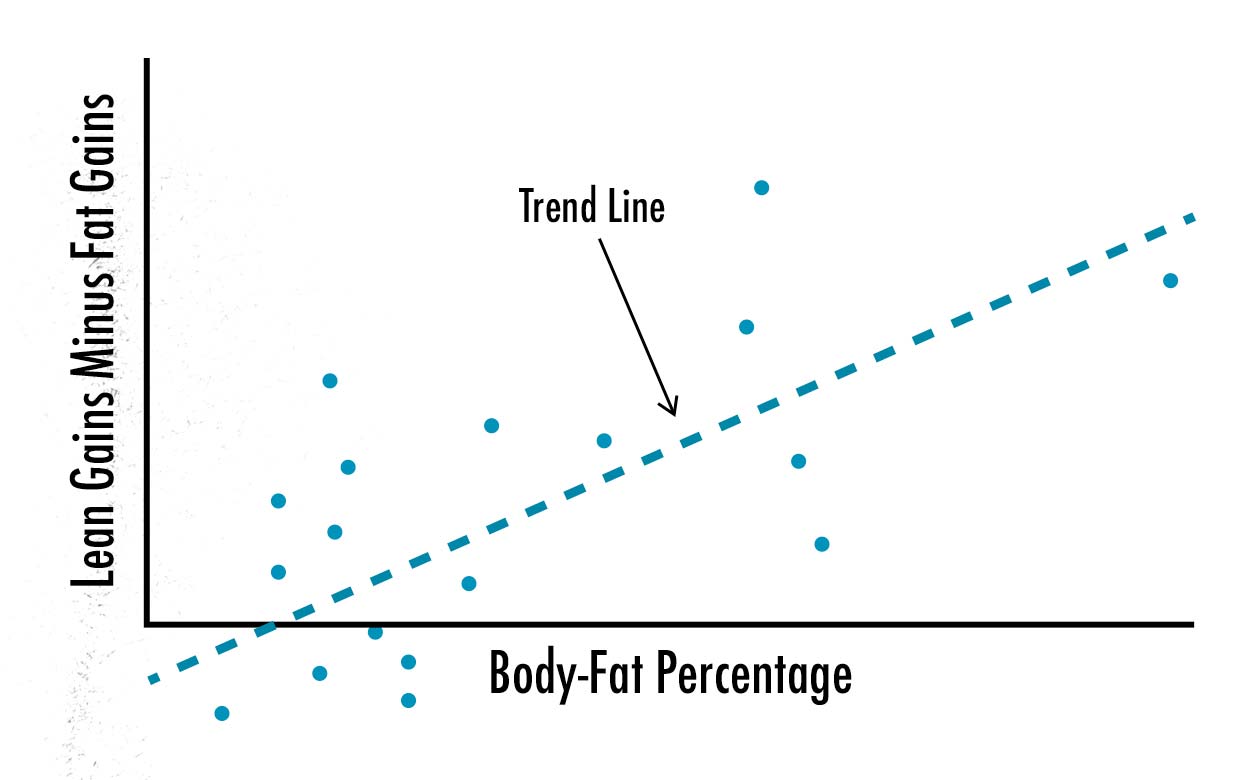
This data comes from Dr Brad Schoenfeld’s study on how protein timing affects muscle growth. But what Greg did was organize the participants by body-fat percentage to see how lean their muscle gains were. Surprisingly, it shows that the people who had a higher body fat percentage gained more muscle and less fat. Here’s what Greg told me:
Gains in lean mass are basically the same for everyone, but lean people tend to gain some fat (suggesting they are in a surplus), and heavier people actually tend to lose some fat.
Greg Nuckols, MA
As they go through more research, Greg told me that the effect is growing starker. We see this same effect in various studies, both on highly trained athletes, such as football players, and on everyday folks who lift weights. Even people with bonafide insulin resistance seem to be able to gain muscle quite leanly.
There is no ideal body-fat percentage for bulking. The idea that we need to keep our body-fat percentage under 20% to gain muscle leanly seems to be a myth.
Does This Change How We Should Bulk?
This new research is fascinating, but I’m mainly interested in how it changes how we should approach building muscle. So I had a few questions for Eric Trexler about what that meant for people who are skinny, skinny-fat, or overweight. And also what it means for intermediate lifters who are already fairly lean and muscular. What’s the best way for them to continue improving?
How Should Skinny People Bulk?
If having a higher body-fat percentage is better for making lean gains, that’s great for overweight people… but what does that mean for skinny guys? After all, if we have lower body-fat percentages, does that mean that we’re more likely to gain fat while bulking?
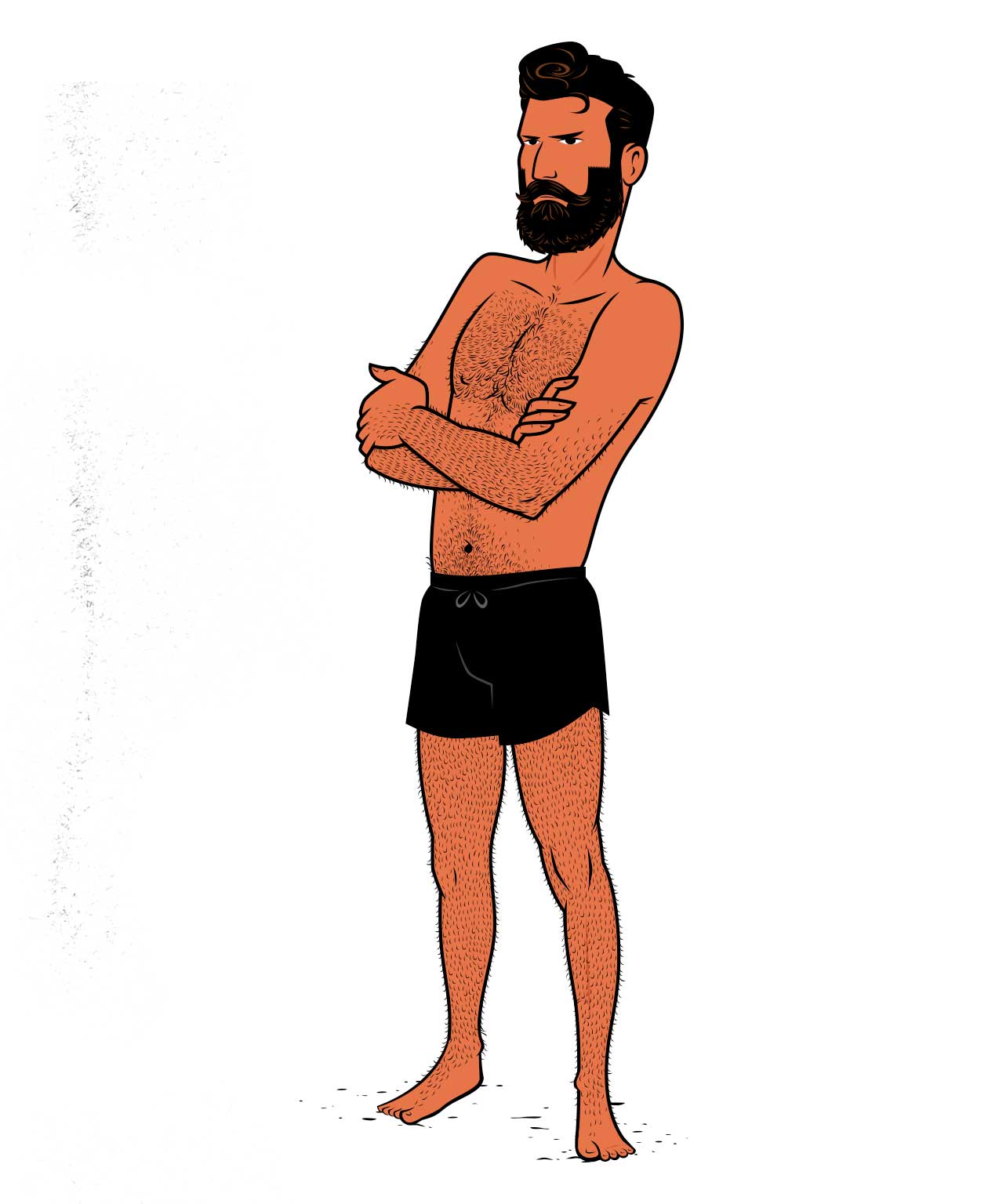
The good news is that Eric thinks that naturally skinny guys may have a lower BMI because we’re naturally resistant to fat gain. In that case, because our body fat percentage is already at a level that’s natural for us, we’re able to make fairly lean gains.
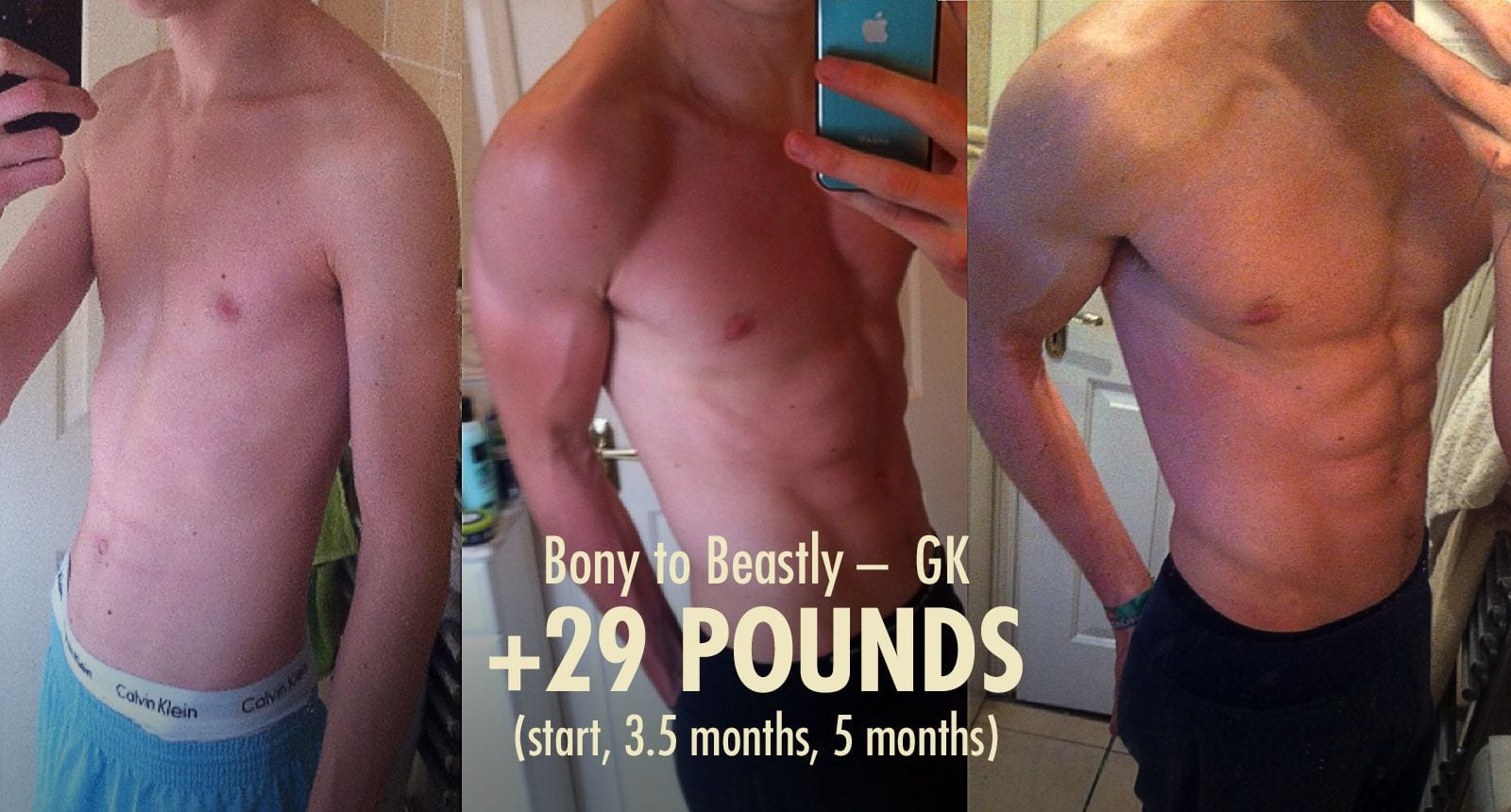
Skinnier people getting leaner gains hasn’t been proven, but it lines up with our experience helping a little over 10,000 skinny people bulk up. We tend to see fairly lean gains. Not always, but most of the time. It seems that we often have a genetic predisposition to defend lower body-fat percentages, and that predisposition only improves as we get into the habit of lifting weights and eating better diets.
There probably is a biological [body-fat percentage] range that we defend, but it might not necessarily be the body-fat you’re at when you start trying to change your physique.
Eric Trexler, PhD
Plus, the argument isn’t that having a higher body-fat percentage is good, just that the more out of shape we are, the easier it is to make improvements. And it seems likes that may apply to muscle growth, too. The less muscle mass we have, the further we are from our genetic potential, and so the faster we can build muscle.
So it’s possible—although not proven—that because we’re starting skinny, we can build muscle faster, perhaps allowing us to gain less fat even while bulking aggressively.
How Should Overweight People Bulk?
If someone is overweight and eager to build muscle, as is common with sumo wrestlers, linemen, and powerlifters, they can expect to gain muscle quite well. However, if the goal is to be healthy, it probably makes sense to, at some point, get down to a healthier body-fat percentage. After all, for most people, as rad as it is, muscle isn’t everything.
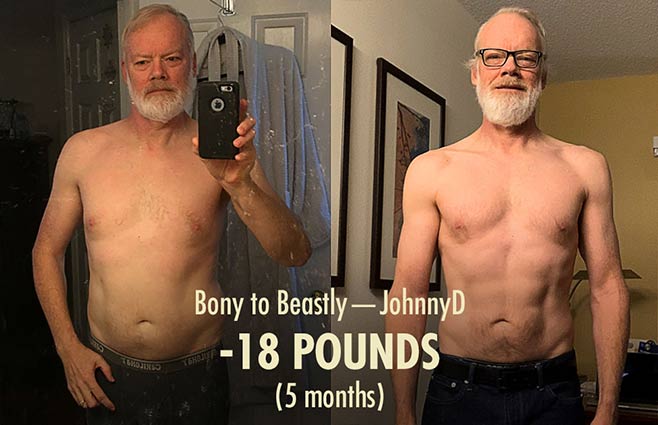
The good news is that the permissive effect that a higher body fat percentage has on muscle growth works in both a calorie deficit and surplus. So, if someone is overweight, they’re often able to gain muscle quite well even while losing weight. Again, it seems that the more out of shape we are, the easier it is to improve our body composition.
How Should Skinny-Fat People Bulk?
This is the one that had me excited. We’ve often recommended that skinny-fat guys start by cutting down to a body-fat percentage of around 15%, trying to build a bit of muscle as they go. The problem is that losing weight when we already feel skinny can make us feel even skinnier, which can be demoralizing.
For “skinny-fat” people, I think preference could dictate the decision to cut or bulk first, and either route could result in similar success.
Eric Trexler, PhD
This new research shows that it’s perfectly okay to start by focusing on building muscle—by bulking. The gains can come quite leanly, so there’s no real downside to it. Once we feel big and strong enough, we can trim off the fat to reveal the muscle underneath.
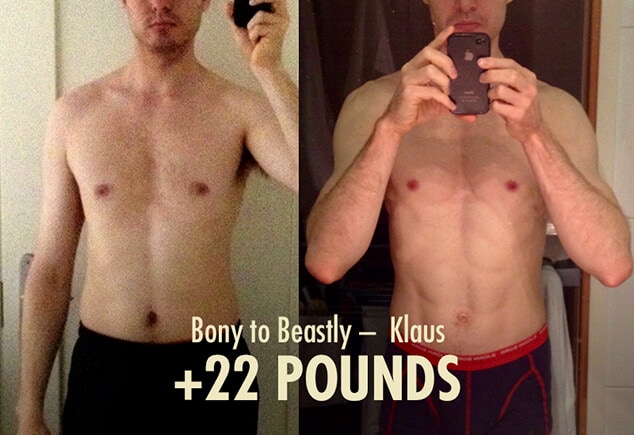
So if you’re skinny-fat, you have more freedom to follow your preferences. Start with a bulk, start with a cut—whatever you prefer. Your body fat percentage doesn’t matter. That’s great news.
How Should Intermediate Lifters Bulk?
Okay, so here’s the tricky part, and probably where most guys go wrong. The standard advice is to cut until we’re quite lean—say 10% body fat—and then to bulk until we get to somewhere in the neighbourhood of 15–20% body fat. The problem is, when we cut down to a body fat percentage that’s lower than our bodies are comfortable at, our bodies will prioritize regaining that fat.
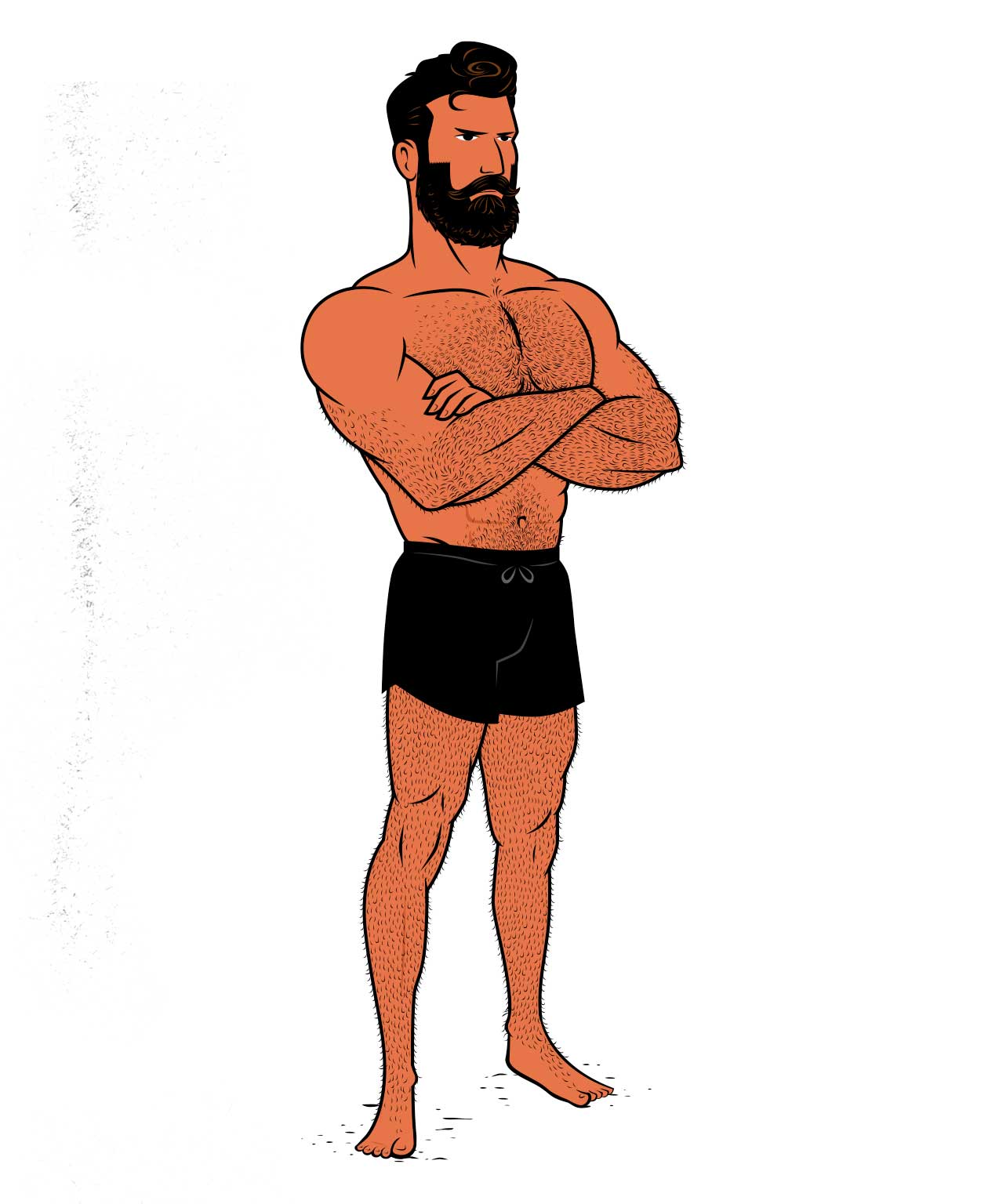
For example, let’s say that when you’re in the habit of lifting weights, eating a good diet, and getting good sleep, your body fat tends to naturally hover around 14%, with a hint of abs.
- Traditional bodybuilding wisdom is to cut down until you’re closer to 10%, allowing you to make leaner gains, and giving you more room to gain some fat before your insulin sensitivity starts to go down. But what’s more likely to happen is that you’ll gain proportionally more fat until you get back up to 14% body fat.
- A better approach is probably to start bulking at 14%. That’s well within the healthy range, and because you’re already at your natural body fat percentage, your body won’t be trying to add more fat. You’ll be able to make leaner gains from there, and you’ll ultimately wind up in the same place, just without time wasted burning and then regaining fat.
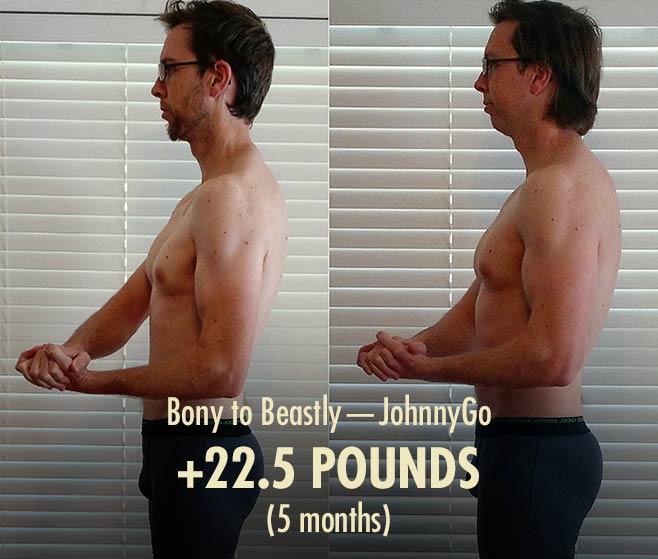
So if you naturally hover at around 12% body fat, start your bulk from there. If you naturally hover at 15%, start your bulk from there. The idea is to start your bulk from a body-fat percentage that your body is comfortable at, where it won’t be trying to regain that cushion. Not that cutting lower than is bad, just that it may be a waste of time.
For intermediate lifters, there’s no need to cut down to a super lean body-fat percentage before starting a bulk. In fact, it’s probably a waste of time. Better to just bulk from a body-fat percentage you’re more comfortable at.
Research Update
A new study by Chávez-Guevara found that overweight and out-of-shape people have an easier time burning fat. This study had the participants engage in easy cardio (such as going on a brisk walk) and found that the overweight participants were able to get most of their energy by burning body fat.
Summary
This new research suggests that there’s no need to worry about getting super lean before bulking and that having a higher body fat percentage won’t harm our ability to build muscle leanly.
In my opinion, the important point is that people absolutely shouldn’t feel like they are “supposed” to cut first based on some physiological rationale related to hypertrophy
Eric Trexler, PhD
With that said, it’s still wise to keep our body fat percentage under 20% for our health. Many people prefer how they look when their body fat percentage is under 15%. It’s just that we don’t need to worry about how a higher body fat percentage will affect our muscle growth or fat loss. If anything, as our body fat percentage rises, our gains will become proportionally leaner.

If you want a customizable workout program (and full guide) that builds in these principles, check out our Outlift Intermediate Bulking Program. Or, if you’re still skinny or skinny-fat, try our Bony to Beastly (men’s) program or Bony to Bombshell (women’s) program. If you liked this article, you’d love our full programs.
Shane Duquette is the co-founder of Outlift, Bony to Beastly, and Bony to Bombshell. He's a certified conditioning coach with a degree in design from York University in Toronto, Canada. He's personally gained 70 pounds and has over a decade of experience helping over 10,000 skinny people bulk up.


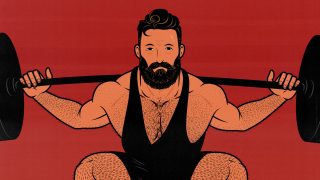
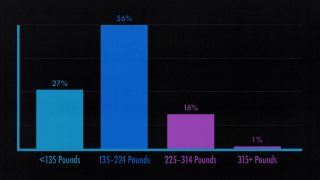
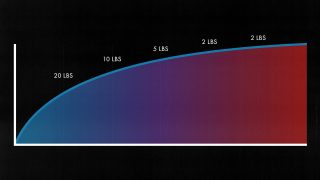

This is exciting research with some interesting preliminary results! I followed the conventional wisdom that thought you needed to be rather lean to make lean gains, otherwise, it would start spilling over into fat. Being at about 15% BF I was always head-casing about whether to cut or keep bulking. I’m currently 165lbs at 6’1 with the goal of reaching 180 with a similar body-fat percentage. This article has made me more confident in just bulking on through to 180lbs and then cutting a few pounds once I hit my goal. Currently following the b2B program so I feel like I can do it.
That’s awesome, AB! I love the plan. Bulking to 180 sounds perfect 🙂
Just keep those gains coming slow and steady. Something like 0.5–1 pound per week.
IME if you are starting as an overweight beginner at above 18% bf there really is no need to maintain a caloric surplus, especially in the first two months of lifting. Consuming at least 1g of complete protein per pound bodyweight and a super aggressive caloric deficit combined with a high-intensity RPT to failure full-body (minus legs) routine 2X a week got me from above 20% bf to a 4-pack with about a 50% improvement in strength in two months. Most of that 50% improvement was neurological, but I definitely grew a good amount of muscle too.
Since I’d wager probably 95%+ of people are lifting with the goal of improving their appearance rather than maximizing muscle gains at all costs I think overweight beginners would be much happier with their results if they were to maintain a caloric deficit rather than a surplus, at least at the beginner stage. You might be cutting into your gains a little, but you will actually be able to see your muscles growing when you look in the mirror, which is huge for motivation and consistency. So psychologically, you will be training a positive visceral association in your brain with what you are doing in the gym and with your diet when you visually assess your results, which is why I think I enjoy and look forward to going to the gym now (been at it for about 8 months at this time), whereas when I tried working out previously I burned out pretty fast and stopped.
In short, I think the unquantifiable psychological component here vastly outweighs the empirical for the vast majority of people. Consistency and motivation are paramount when you factor in the high burnout rate. My gym gets a LOT less crowded after January ends.
Congratulations, Tom! That’s awesome!
I agree with all of what you’re saying. Totally makes sense.
Some of these “transformations” are obviously fake. For example, there’s no way the guy from the first one gained 29 pounds in 5 months without using steroids or other drugs, unless he had been really jacked in the past, lost the muscles and gained it back for the picture, and even that is not very likely to happen within just 5 months. I’m going to say that either he has trained for more like 5 years and not 5 months, or he’s juiced. Which one is it?
You’re setting very unrealistic expectations for people. You should be ashamed.
Hey, Chris. I understand the skepticism. There’s this idea that a natural can only gain 20 pounds of muscle in his first year of training. That’s just an estimate of what the average guy can do, though. It’s not a hard limit. Some guys can gain less, others more. In our experience, guys who are starting off underweight are often able to blow those numbers out of the water. In the case of GK gaining 29 pounds in 5 months, he’s a skinny beginner making newbie gains.
The transformations we post aren’t fake or manipulated. They all come from our online coaching community. Every member of the program can see their progress threads.
We’re a program for naturals. I’m a natural. And I’m openly against steroids. It’s possible someone doing our program has taken performance-enhancing drugs. We don’t drug test our members or anything. But we’ve never encouraged drug use or known about it. I don’t have any reason to believe any of these transformations weren’t natural.
Nobody should expect their progress to mirror another specific person’s progress. Even if they followed the same program and lived the same lifestyle, genetic differences would still affect their results. So I agree, it would be unrealistic for someone to expect their bulking transformation to turn out exactly like GK’s. I think it’s better to look at a variety of different transformations.
I’m a naturally skinny guy myself. I started off very underweight. When I first started successfully bulking, I gained 20 pounds in 3 months (130 to 150 pounds at 6’2) and finished looking leaner than when I started. The next year, I helped my roommate do the same thing. We were both natural, both beginners. So when I see this happen with other skinny guys, I know it’s possible.
If you talk with other people who help skinny guys build muscle, I think you’ll hear the same thing.
Thanks for this article it has clarified so much! I just wanted to ask what is the maximum fat percentage for a woman to stop bulking? 🙂
It seems that once you get higher than 31%, it might start to negatively impact your health. That’s not a hard cutoff, though, just a loose estimation. The difference between 29% and 33% is very small, and exercise and muscle mass seem to mitigate some of the harms of being overweight anyway (study). Still, if you find yourself climbing into the thirties, maybe ease back. I think that’s a safer way to play it.
The situation becomes a bit trickier when we consider diabetics (particularly type 2) whereby having more lean mass than fat is actually beneficial to increase insulin sensitivity (and muscle tissue functions as a kind of blood sugar storage rather than let that go running amok to cause organ and peripheral tissue damage!). That being said, the tricky balance is how to add that lean mass, while losing fat, and not drifting too much into caloric surplus that will impact blood sugar levels.
I wonder what your thoughts are (and the research) behind any of the “body recomp” style approaches. Judging by what was posted in this article, it doesn’t quite seem feasible, and possibly the recomp stuff is more a pipe dream + gimmick to sell product. Or, perhaps, it is just a process of rapid cycling of bulk/cut as opposed to a longer sustained interval of the months-long bulk followed by subsequent cutting phase.
By the way, waving hello from Canada (as well). Signing up for the notification list! Thanks to you both for providing some great content for me to read between sets! 😀
Hey KF, my pleasure, man! 😀
I actually don’t know very much about diabetes. That’s outside of my area of expertise. I don’t want to give advice about it. I’d hate to say something naive and wind up hurting someone.
For people in general, body composition is realistic! People do it all the time. You can find body composition in tons and tons of hypertrophy studies. Thing is, it’s easiest for people who are overweight, beginners, or rebuilding muscle they lost. For intermediate lifters who are in good shape, recomp is much, much harder. It’s not impossible, it’s just very slow. Progress would come faster if they bulked up to build muscle and then cut off any fat they gained.
The situation gets grimmer if you’re lean. If you’re at 10–15% body fat, and your body isn’t keen on sinking lower than that, then recomp becomes a pipe dream. Again, not that it’s impossible, just that it’s kind of a waste of time.
For instance, I lift pretty decently most of the time. I know how to do it, I know how to push myself, and my habits are pretty good. I also eat a pretty good diet, including eating enough protein. But if I’m not gaining weight, I don’t gain strength or muscle size. None at all. Years later, maybe some of my lifts are a tiny bit better and some of my muscles look a little cooler, but my measurements are about the same. But if I spend a few months eating enough calories to gain weight, all of a sudden I start gaining muscle and strength. I can make more progress in 6 months than I could with 6 years of body recomp. But I say this as an intermediate lifter at around 11% body fat. Different people are in different situations.
Hi, Shane.
Do you know if the guys at MASS have any updated results on this? Since the first results were preliminary, I’m curious to hear if later analysis seem to confirm the first findings or not. Thanks.
Hey John,
Yeah, they’ve written a few articles about it and crunched more data. All of their updates so far confirm these findings.
I think the more important part, though, is that there’s no good evidence showing any reduction in muscle growth at higher body-fat percentages. As in, before we start believing the claim that a higher body-fat percentage harms muscle growth, we’d need to see some strong evidence of it.
Great article, really enjoyed the read.
I wanted to know what if my body’s comfortable setpoint is around 25% as an intermidiate lifter and I don’t want to keep it that high anymore. Do I lean down to a bodyfat I would be more comfortable in and stay there for a while? Would that change my setpoint? How long does it approximately take to “stick” if that’s how it works? Is there any research on the topic that I can go through regarding the bodyfat setpoint?
Hey Marino, I can’t say I’m a super expert on this. Our specialty is more with skinny people. We’re more familiar with people trying to get to a HIGHER settling point. It’s absolutely true that many overweight people really do struggle to live at a healthy body-fat percentage. Still, I suspect by improving your lifestyle you can get comfortable at a lower settling point.
The first thing is that being comfortable at a certain body-fat percentage doesn’t mean you can’t also be comfortable at a lower body-fat percentage. It’s totally normal to gain fat and be comfortable there. And you’re right. If you cut down to, say, 17% body fat, perhaps you’d eventually become comfortable there, too.
The other thing is to try changing the aspects of your lifestyle that could help. You could think about eating more whole foods, fewer liquid calories, eating more protein, more fibre. You could try aiming for 10,000+ steps per day. You could try improving your sleep. You could try plugging up any holes in your lifting program. For instance, maybe you’ve been neglecting squats or Romanian deadlifts, and thus missing out on stimulating growth in your biggest muscles.
If you cut down to a moderate body-fat percentage (like 17–20%) and then try to manage your lifestyle and appetite, I think you might become comfortable there. I’m not sure how long it would take. I’m guessing the worst of the cravings and hunger would disappear within a couple of weeks of stopping your diet and going back to maintenance. For that body-fat percentage to feel totally natural, though, it might take several months or even years. You might always need to monitor it, doing a small cut every year or two to trim off any pounds you gain. (Similarly, I need to do small bulks every year or two to regain small amounts of weight I lose.)
If you want more info on how to live comfortably and healthfully at a lower body-fat percentage, especially as someone who lifts, I highly recommend Dr. Spencer Nadolsky. He’s on Facebook and Instagram and he has a newsletter and all of that stuff. His content is great. You could even try asking this same question to him. He might be able to give you better insight than me.
Im currently at 27% BF. What should I do?
I’d start by lifting weights and trying to eat more whole foods, more balanced meals (containing a source of protein, carbs, fat, and fibre). That will be enough to get you good results. If you focus on getting stronger in your workouts, you’ll probably succeed at gaining muscle while losing fat.
In addition to that, you could also think about cutting back on calories, intentionally losing weight. That way you’d burn even more fat. But you can ease into that. At your body composition, especially if you’re new to lifting, you can probably make quite a lot of progress before you need to start worrying about cutting. That way you can cement some great habits before raising the difficulty level.
I knew it. I never believed the insulin resistance and lower testosterone arguments people made were significant. Yes, this may occur but the benefits of a higher body fat would probably significantly outweigh those negatives. It’s fairly clear that a higher body fat is optimal when you look at the strongest powerlifters in the world. All of them are above 20% body fat. Another anecdotal piece of evidence are the 5-15% body fat dudes in the gym that never bulk. I’ve seen them for years and their physiques barely changed. In 2 years, they have probably gained 10-20% more muscle at most.
After reading many of your articles reference Greg Nuckols among others, I went over to the stronger by science page. I was reading his ‘The complete strength training guide’ and he still recommends: “Quite simply, you’ll respond better to training and recover better from training if you’re leaner. If you’re a male over 20% bodyfat, or a female over 30% body fat, getting down to the 12-15%/20-25% range will make it easier to train hard, recover well, and build more muscle and strength.”
I was wondering if the research initially showing higher fat promotes leaner gains didn’t pan out, or if the study has not finished yet so he hasn’t updated his recommendations.
Hey Chris, I think that’s one of his oldest articles. The stuff I’m referencing is probably about a decade newer.
So you’re right, just with order reversed: there used to be this idea that getting leaner would allow for lean gainers, and that was the rule of thumb for many years, until a couple of years ago when Greg Nuckols and Eric Trexler dug deeper into it, finding that the evidence doesn’t support the old idea. It doesn’t seem like the evidence ever supported the old idea, it’s just that it sounded logical, so nobody had really bothered to check.
I won’t comment on being lean improving recovery or making it easier to train harder. This article is just about the ratio of muscle and fat you’d gain at different body-fat percentages.
I checked with Greg Nuckols just to make sure.
It was an older article. He doesn’t stand by that statement anymore. The newer articles on the p-ratio (as explained in this article) represent his updated stance.